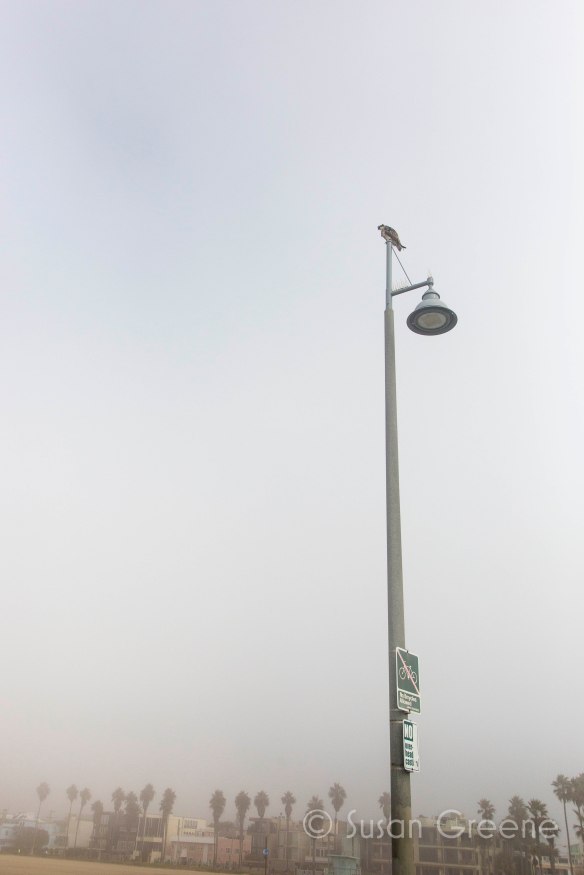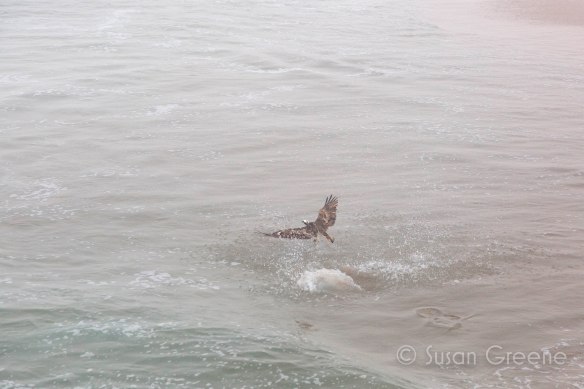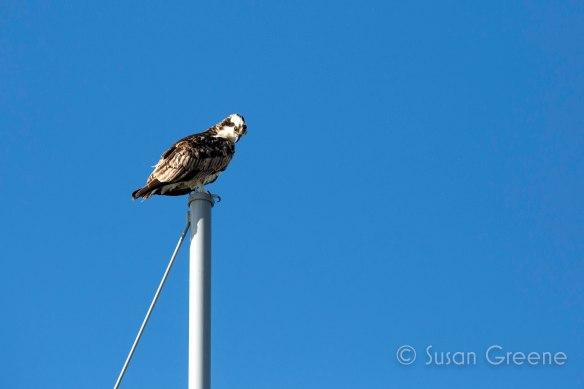Do you know that feeling of joy mixed with luck when you drop the lid to something on the floor and it lands messy side up? Photography can produce that response too. Lately, an osprey is the source of those emotions for me. First time I spotted it was a few months back, while on a bike ride, on the beach path. Approaching the pier where I turn around to head back, I noticed a hulk on top of a light pole. It seemed larger than a seagull and piqued my inner birder.

I approached the pier and stumbled upon a lifeguard talking with a group, who seemed as interested as I, about the bird. In this makeshift class I learned the bird in question was an osprey (also known as a sea hawk by the way). The lifeguard also mentioned seeing it fishing at times from his vantage point of the tower on the pier. The prospect of this natural phenomenon occurring right on these shores, in this city, in front of my eyes was thrilling. I watched it for a while, but it didn’t go fishing that day. I was regretting my decision to leave my DSLR at home but thinking of the mantra I have heard uttered so many times – the best camera is the one you have with you – I pulled out my phone to capture this sighting.
Fast forward a few months, same ride, with my DSLR this time. I see the same sized hulk on the pole again. Could it be? Yes, it is! An osprey!

Marveling at my luck at finding the osprey while having my bigger camera in tow, I wait and watch the bird as intently as the bird focuses on the water.

Suddenly it swoops from its perch and dives towards the surf.

Jackpot! It arose with a fish in its talons. My luck at being on that pier for that exact moment elicits awe and giddiness. If only the osprey could know its impact by simply going about its daily life.

It flew out of sight, continuing on past oblivious surfers.

The next week, same ride, carrying DSLR with a bigger zoom lens this time, I spot it. The osprey is back again!

It is a sunny day this time and the light coupled with the zoom lens provided the opportunity to capture more details in the eyes and feathers. I think it spotted me.

The osprey’s presence brings people together in unexpected and pleasant ways. Seems as though pointing your camera towards the sky grabs the attention of others. Many have taken to asking questions and we end up swapping stories of our neighborhood birds. This day, it hung around for a bit staring at the water and preening before flying off into the distance swooping towards the water without catching anything.

Sometimes we get caught up in our routines; returning to the same locations doing the same things, and there is comfort in that, but it can also feel monotonous. If we take time for awareness, we might notice that even the same places are different from day to day: the lighting, the people, the animals are some of the elements that combine and interact to create a freshness. If you keep an eye out, inspiration can strike at any moment. You may be lucky enough to be at the right place at the right time, or maybe you always were and just didn’t notice it.
Sending thoughts and prayers to all impacted by the wildfires in California and gratitude for the firefighters and first responders.
Stay safe,











